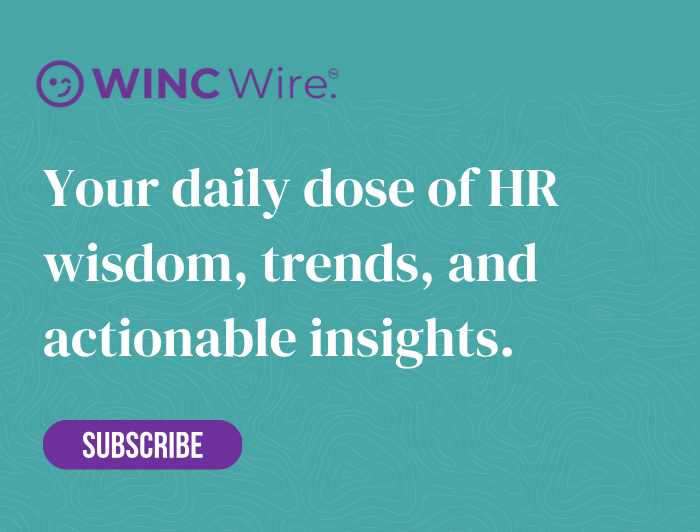Starting an HR function from scratch isn’t just about admin; it’s about architecture. It’s the moment you get to define the very DNA of the organisation. Over my career, I’ve had the chance to build three HR departments from the ground up, often starting with little more than a borrowed desk and a conviction that people are what truly drive a business.
This is never about simply ticking boxes for policies and payroll. It’s about designing a workplace where sharp operational process meets genuine human connection. Here’s a practical, experience-led guide to creating an HR department that genuinely adds value and makes a difference.
1. First, understand the lay of the land
Before you build anything, you need to know what you’re working with. What’s currently masquerading as HR in your company? Are recruitment efforts sporadic and inconsistent? Maybe there are a few old policies floating around from a previous era? A great first step is to score each key HR area (like talent management, compliance or onboarding) from 0 to 10. This gives you a clear picture of whether you’re laying fresh foundations or renovating a structure that’s already there.
Honestly ask yourself:
- What, if any, systems are being used for HR tasks right now?
- How involved are your line managers in people-related decisions and processes?
- Are conversations about talent and potential happening at all, or only when there’s an empty seat to fill?
- Which policies exist, and which do you need to get in place immediately to protect the business and its people?
You wouldn’t design a building without surveying the site first. This is no different.
2. Bring order to your people data
Every single employee’s journey starts with organised, secure and compliant records. If your files are currently a mess, scattered across different managers’ drives or hidden in cryptically named folders, this is your first big clean-up job. Your immediate priority should be creating a digital personnel file for every single employee. You’ll need to work closely with IT to get the right encryption and access controls in place from day one.
Think methodically: payroll history, right-to-work documents, performance notes, and training records. Everything needs to be consistent, organised and completely compliant with regulations like GDPR.
3. Establish your core policy framework
Think of policies as the essential guardrails that allow your culture to thrive safely. Don’t try to write a rule for everything; start by formalising the non-negotiables that govern daily work and ensure you’re legally sound.
Your initial focus should be on:
- Working hours and attendance expectations
- The recruitment process and how performance is managed
- Leave entitlements and how grievances are handled
- Clear anti-harassment and inclusion principles
- A code of conduct (which should absolutely include social media)
- Health and safety, and data confidentiality
The key is to write them in plain English, make them easy for everyone to find, and communicate them actively. A policy is only useful if it’s alive and understood, not gathering digital dust in a folder.
4. Recruitment and onboarding: much more than a warm welcome
First, create a structured and repeatable recruitment process, from the initial job brief with a hiring manager right through to the offer letter. Define who is responsible for what, which documents are needed at each stage, and how you’ll conduct interviews consistently.
With that in place, you can turn your attention to onboarding. Don’t think of it as a checklist; see it as the first, most crucial step in retaining your new hire.
I find it helpful to break it down into five key moments:
- Pre-boarding – Making a connection and building excitement *before* day one.
- Day One – Nailing that all-important first impression.
- Week One – Ensuring people are immersed in the culture and have real clarity on their role.
- The First 90 Days – Providing the support and structure they need to succeed.
- End of Year One – A chance to check in on long-term goals and alignment.
An onboarding experience that is done well is your very first, and perhaps most powerful, act of retention.
5. Articulate your ‘Total Reward’ with purpose
What you offer people goes far beyond the number on their payslip; it’s about the full value proposition. Start by mapping out your salary bands and core benefits (paid leave, pension schemes, health cover). Then, you can start thinking about the layers you can add on top.
- Performance-related bonuses or incentives
- Wellness allowances or private medical insurance top-ups
- Share options or other long-term incentive plans
Your job is to bundle all of this into a compelling “Total Reward” story that helps employees see and appreciate the full value of being part of your organisation.
6. Audit your tech stack for compliance and scale
Take a hard look at the tools you have (or don’t have). Do you have:
- A payroll system you can actually rely on?
- A central HR Information System (HRIS) to be your single source of truth?
- An Applicant Tracking System (ATS) to manage recruitment?
- A platform for learning and development?
- A system to properly track performance reviews and objectives?
Prioritise platforms that automate routine tasks, minimise risk, and are built to grow alongside your workforce.
7. Keep your legal house in spotless order
Compliance isn’t just about avoiding fines; it’s the bedrock of trust with your employees. You need to get intimately familiar with UK employment law, data protection regulations like GDPR, and any specific rules that might apply if you have remote or international workers.
Double-check your employment contracts, right-to-work checking processes, and any mandatory legal disclosures. If you’re ever in doubt, this is the time to get proper advice from legal counsel.
8. Create an employee handbook that people actually want to read
Please, don’t think of the handbook as a dull, static PDF. It should be a welcoming guide and a true cultural compass for new starters and long-term employees alike.
It absolutely must include:
- The company’s vision, mission and values in its own words
- A short, engaging history of the organisation
- Plain-language summaries of key policies and benefits
- Clear guidance on who to talk to for different kinds of support
While tools can help with the formatting, the tone is what you need to perfect: make it clear, approachable and truly inclusive.
9. Design a learning culture right from the start
Begin with a simple but powerful question: what skills does this organisation need to learn today to win tomorrow?
This triggers everything else. You can conduct a skills gap analysis, hold meaningful career development conversations, and spot both your rising stars and your future talent gaps. From there, you can build a simple but effective L&D offering, using a blend of internal mentoring, e-learning, practical workshops, and targeted coaching.
The goal is to encourage everyone to have their own personal development plan. That’s how growth becomes contagious.
10. Craft an HR plan that looks to the future
What capabilities and talent will your business need in six months? And in a year’s time?
Your job is to map out your hiring plans, internal development needs, and strategic HR projects, aligning them directly with the company’s overarching objectives. You’ll need to budget for this properly and revisit it quarterly, because things always change.
Think of this as your strategic HR roadmap; it’s part GPS, part compass.
11. Know when to scale your HR team
From experience, a single, dedicated HR lead can typically manage well for up to about 50 employees. Once you get beyond that number, you need to start thinking about expanding.
You might start with a generalist who can take on a bit of everything, or you might find you have a specific need for a dedicated recruiter, an L&D specialist, or someone to handle HR operations. And don’t forget to look inwards; some of your best future HR talent might already be working in another part of the business.
The real work: being the guardian of the culture
Building an HR function from nothing is a profoundly strategic act that demands a blend of operational discipline and deep human empathy. When you get it right, it becomes the true heartbeat of a culture where your people can flourish and the business thrives.
Arm yourself with adaptable templates and stay connected to what’s happening in the wider world of work. But above all, never forget that your success, and the company’s success, is ultimately built on the strength, engagement and potential of your people.






